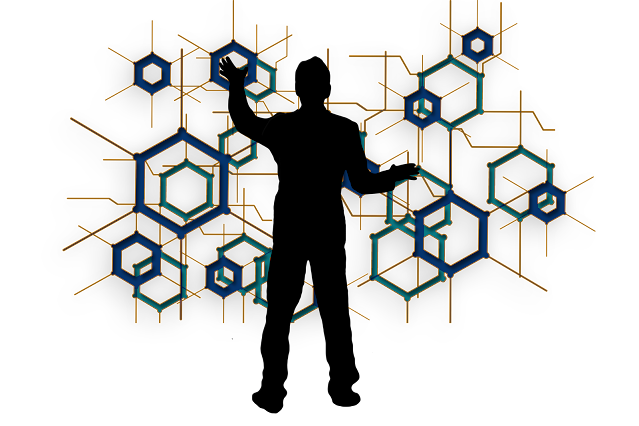What is SEO Algorithms?
The search engine optimization algorithm is a complicated system. Data is retrieved from the search index by the developers. As a result, valuable results for a query are delivered promptly. The SEO algorithm for search engines uses a combination of artificial intelligence and ranking signals to present web pages on SERPs that are rated by relevance.
Whether you searched for " smiley face videos" or "shoe stores in Delhi," the search engine returned millions of results. However, how does it decide which results to show you, and in what order?
The algorithm used by search engines to serve search results is very complex, and it changes frequently. Even though the company doesn't disclose its exact algorithm, we know there are a few factors that directly influence a page's chances of appearing in search results.
Types of Google Algorithms
In the 1990s, search engines were not as effective as they are now; they were primarily concerned with keyword matching and backlinks. As a result, focusing on specific keywords and establishing a big number of backlinks made it relatively easy for low-quality websites to rank higher.Google created an algorithm to filter the results and clean the web to address this issue. Since then, Google's algorithm has been modified on a regular basis in order to keep its search engine current and effective.
Some of the major Google enhancements that have helped it better screen webpages and clean the web include.
1. Google Panda Algorithm
Date: 24th February 2011The Google Panda Update was created primarily to prevent the usage of sites and pages that contain low-quality material from appearing in Google's top search results.
Panda used to give web pages a 'quality score. ' This score is used to determine a website's ranking. Panda was originally a filter rather than a part of Google's ranking algorithm, but in January 2016, it was becoming a core algorithm.
Google's Panda algorithm update was released on 24 February 2011 and is the first major algorithm update it has made. One major goal of the update was to focus on content quality scores to web pages and descale the site with low-quality, spammy, or thin information.
How to make changes:
Check your site for content duplication, thin content, and keyword stuffing on a regular basis. You'll need a web crawler, such as Checkbot.
Note Point:
Duplicate content, plagiarism, user-generated spam, thin content, keyword stuffing, all of these would be penalized under the Panda update.
2. Google Penguin Algorithm
Penguin Update aims to penalize websites that use deceptive links. Artificial link profiles that modify search results to spam them are detected. In 2016, Penguin was included in Google's real-time ranking algorithm. Sanctions would be imposed more quickly, and rehabilitation would be completed in less time.On October 4, 2013, a new update was issued. This Algorithm was created in order to keep the better sites from flooding its search results.
Safety Point
Backlink checker tool SEO SpyGlass should be used on a regular basis to analyze your site. You can also check for the possibility of a penalty. Allow me to state that while Google does not punish your site for having 1-2 spammy links, a sudden influx of unrelated backlinks might be problematic. Additionally, you can request that spammy links be removed from the site.
3. Hummingbird Algorithm
The main goal of this Google algorithmic update is to improve the interpretation of search queries and produce results that are more relevant to the searcher's intent. Even if it does not contain the exact words a searcher inputs. The Hummingbird algorithm can rank it for that query. Hummingbird is also adapted for synonyms. Because of this, Google displays more on-topic results instead of exact keyword matches in its search results.Key Points
Keyword stuffing includes things like keyword stuffing, exact-match keyword targeting, and low-quality content.
In August 2013, Google introduced it to better understand the changing face of the Web. In addition to recognizing a specific keyword, it understood the intent of long search terms.
4. Pigeon Algorithm
The focus of this algorithm is on on-page and off-page SEO quality. According to Google, Pigeon strnegthened the relationship between local and native algorithms, meaning the same SEO elements are now employed to rank local and non-local Google results. Pigeon update considers location and distance as key criteria in ordering results.Major Key Points
Bad on-page and off-page SEO, inconsistent NAP, poorly optimized pages, lack of citations in local directories, and irrelevant set up of the Google My Business page.
Algorithm Update
The Pigeon Google Algorithm update was released on July 24, 2014, in the United States. Another update was released on December 22, 2014, in the United Kingdom, Canada, and Australia.
5. Mobile-friendly Algorithm
A mobile-friendly algorithm was introduced to ensure that the website could be accessed easily on mobile devices. In mobile searches, mobile-friendly websites will surface first, while non-mobile-friendly pages will be penalized and may be deleted from SERPs or ranked lower. Furthermore, this upgrade has no impact on desktop searches. All digital marketing firms have been producing mobile-friendly websites since 2015.Major Point to Check
Illegal content, lack of a mobile version of a site, and improved outlook configuration, poor mobile usability, and non-mobile friendly websites.





















